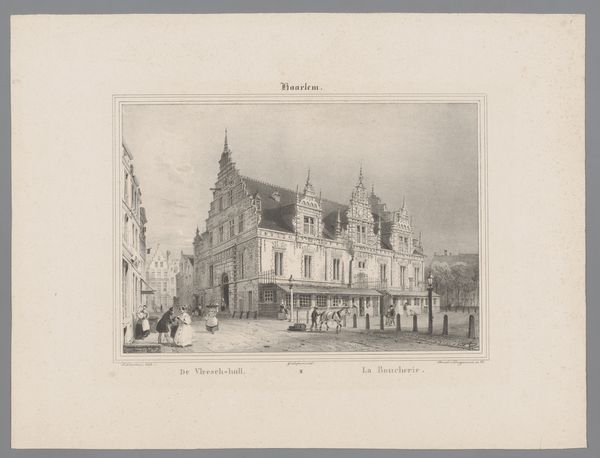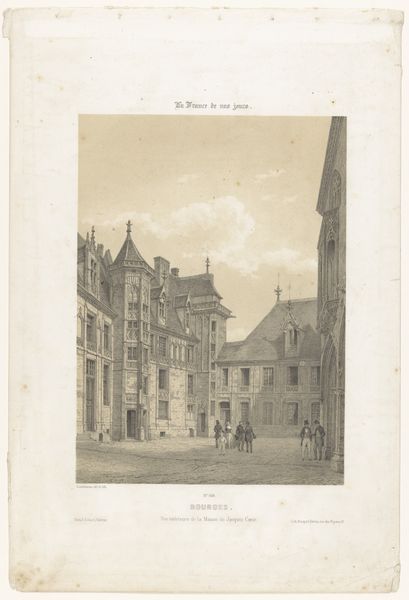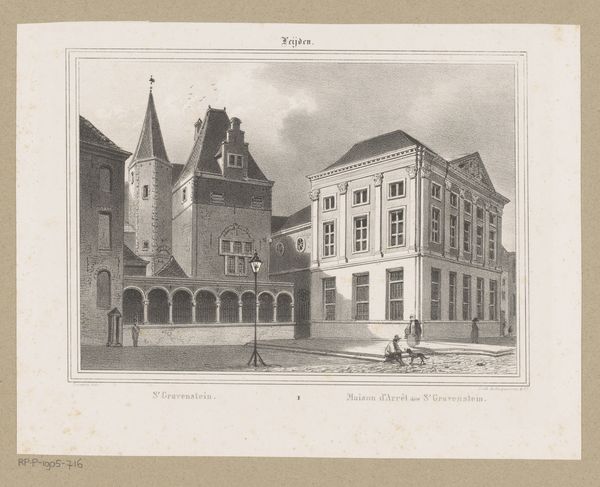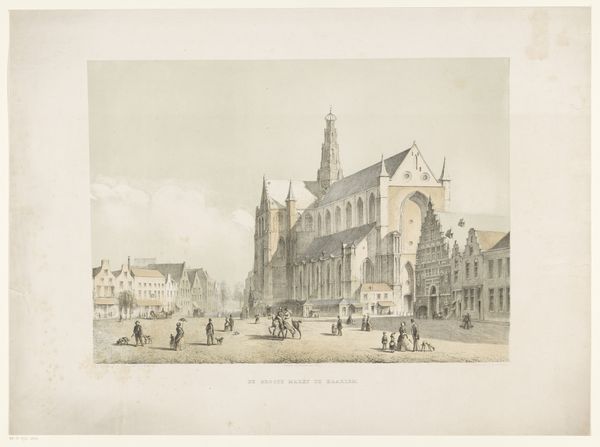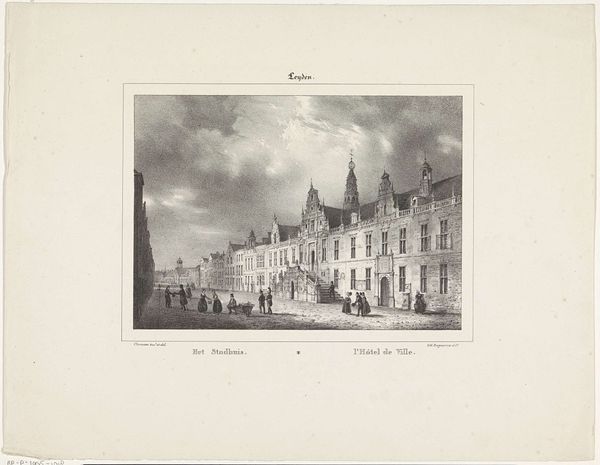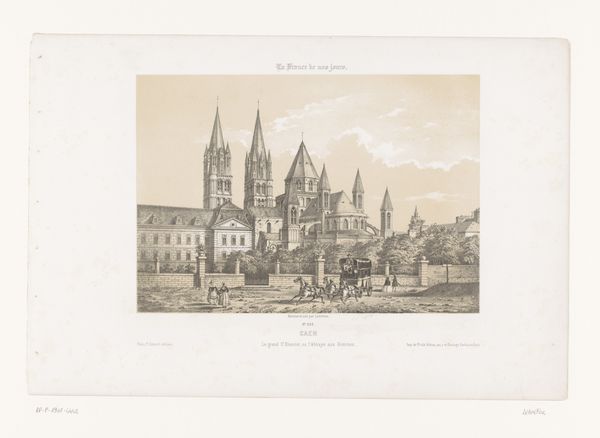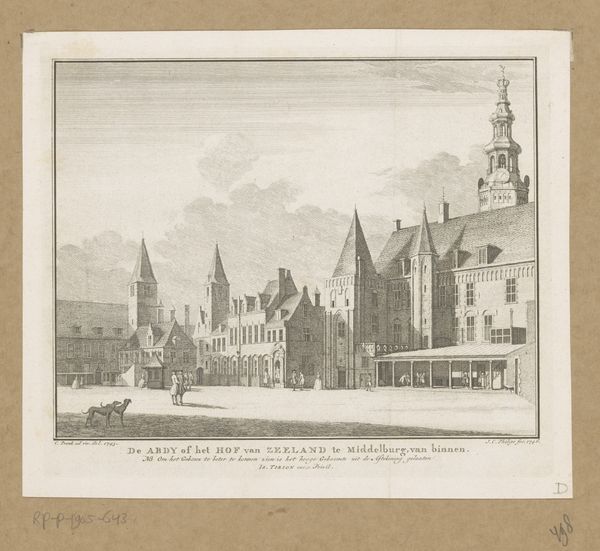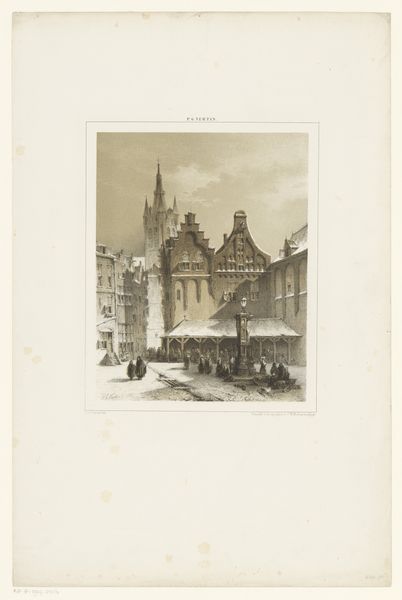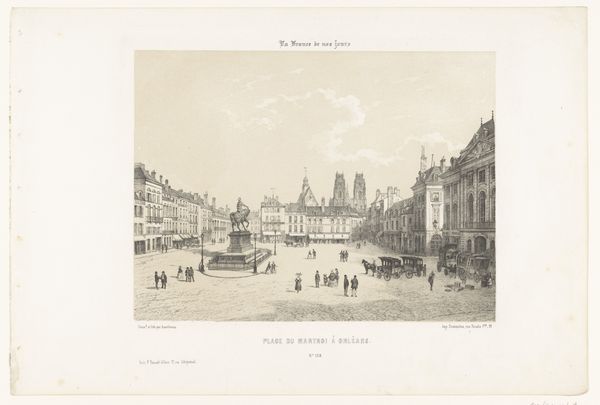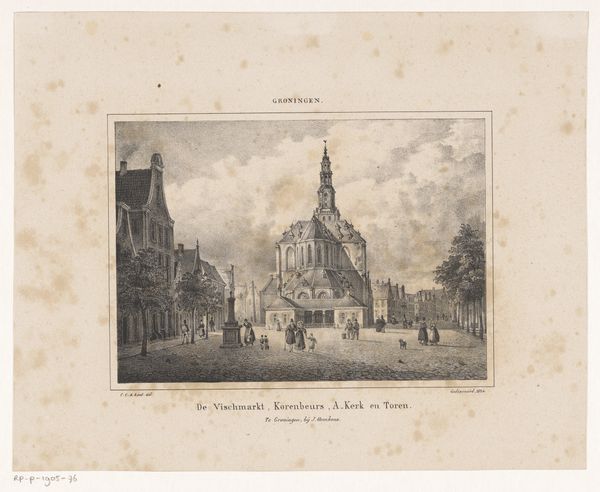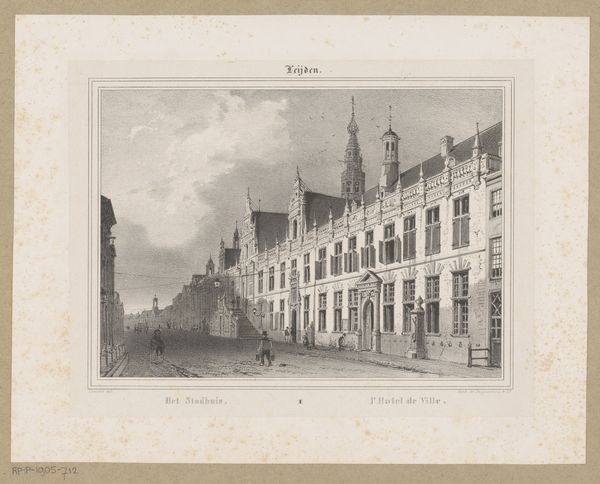
drawing, print, paper, engraving
#
drawing
#
16_19th-century
#
dutch-golden-age
# print
#
paper
#
cityscape
#
engraving
#
realism
Dimensions: height 273 mm, width 358 mm
Copyright: Rijks Museum: Open Domain
Curator: Here we have "Gezicht op de Vleeshal aan de Grote Markt in Haarlem," a print attributed to Paulus Lauters and dating from 1827 to 1900. It depicts a view of the Vleeshal, or meat market, in Haarlem. Editor: It strikes me as stark, almost architectural in its precision. The grey scale emphasizes the building's heavy stone facade, and even though there are people, the scene feels quite…austere. Curator: Lauters situates us in a rapidly urbanizing Dutch landscape, capturing the burgeoning commercial life of the time, though I agree with your characterization of austerity, which connects to deeply ingrained religious anxieties present in art of that era. The architecture becomes a site of capitalist expansion, yet simultaneously signifies older moral regimes and regulations related to food practices and consumption. Editor: Absolutely. It’s a material record of that transformation. You see the cobblestones underfoot, feel the weight of that stone building pressing down. Consider the labor involved in quarrying, transporting, and constructing that building — the literal building blocks of the marketplace are steeped in socioeconomic conditions. The engraving medium itself—the plates, the ink, the pressing—mimics the production ethic of the setting. Curator: What's compelling to me is considering the positionality embedded in the artwork. Who has access to this space, to this depiction of Haarlem? The composition centers a very particular view. One that elides, erases other perspectives, genders, races... Whose city is this? And whose access are we implicitly championing as viewers? Editor: I'm thinking also about the audience that could be expected for this print, which will influence what it can express, and also perhaps, in what settings could the production of prints happen most effectively, and how does that impact distribution networks for those works. Curator: Considering distribution networks is vital to seeing how the Vleeshal transcends simple commerce. It becomes a symbol of civic identity, particularly during a time when Dutch national identity was being both forged and fractured. The building, rendered visible via the prints medium is not just a marketplace; it is a signifier of a shared past, though shared only with select identities within the region and its colonies. Editor: The work shows an active place, a crossroads. While we look into the historical, political, economic context, and debate meanings and the material base that informs its content, there are many more interpretations and connections that can be extracted from this image through different positionalities. Curator: Indeed, reflecting upon what perspectives remain hidden is critical, for what remains unspoken informs that which is prominently presented.
Comments
No comments
Be the first to comment and join the conversation on the ultimate creative platform.
